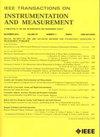用于冰辅助电子束光刻技术的液氢温度低温恒温器
IF 5.6
2区 工程技术
Q1 ENGINEERING, ELECTRICAL & ELECTRONIC
IEEE Transactions on Instrumentation and Measurement
Pub Date : 2024-10-30
DOI:10.1109/TIM.2024.3485441
引用次数: 0
摘要
液氮(LN2)通常用作冰辅助电子束光刻(iEBL)系统的冷却剂,因此低温恒温器的温度不能低于 77 K。要在高真空环境中冷凝二氧化碳(CO2)等更多气态前驱体,就需要一种不依赖液氮的冷却系统。冷头和样品架的最低温度分别为 5.37~pm ~0.012$ K 和 19.14~pm ~0.009$ K,位于液氢的温度区域内。此外,为了将振动对扫描电子显微镜(SEM)的影响降至最低,还采用了气隙隔离系统和离散旋转阀,将振动限制在 30 nm 左右。最后,还研究了作为前驱体的二氧化碳,发现它是 iEBL 中的第二种正电阻,临界剂量比水冰小一个数量级。使用这种抗蚀剂还成功地制造出了金纳米结构。我们的系统实现了 iEBL 系统迄今为止的最低温度,大大扩展了可用于 iEBL 的前驱体范围。本文章由计算机程序翻译,如有差异,请以英文原文为准。
Liquid Hydrogen Temperature Cryostage for Ice-Assisted Electron-Beam Lithography
Liquid nitrogen (LN2) typically acts as a coolant in ice-assisted electron-beam lithography (iEBL) systems, so that the cryostage temperature cannot be lower than 77 K. To condense more gaseous precursors, such as carbon dioxide (CO2) in a high vacuum environment, a cooling system that does not rely on LN2 is necessary. In this article, we integrate a Gifford-McMahon (GM) cryocooler into the iEBL system, which can cool down samples from room temperature to 21 K in 2.25 h. The cold head and sample holder reach minimum temperatures of
$5.37~\pm ~0.012$
K and
$19.14~\pm ~0.009$
K, respectively, which lies within the temperature zone of liquid hydrogen. Furthermore, a gas-gap isolation system and discrete rotary valve are employed to minimize the vibration effects on the scanning electron microscope (SEM), with the vibration being limited to about 30 nm. Finally, CO2 has been investigated as the precursor, revealing itself as the second positive resist in iEBL, with a critical dose one order of magnitude less than water ice. Gold nanostructures are also successfully fabricated using such a resist. Our system achieves the lowest temperature in iEBL system to date, substantially expanding the range of precursors that can be used in iEBL.
求助全文
通过发布文献求助,成功后即可免费获取论文全文。
去求助
来源期刊

IEEE Transactions on Instrumentation and Measurement
工程技术-工程:电子与电气
CiteScore
9.00
自引率
23.20%
发文量
1294
审稿时长
3.9 months
期刊介绍:
Papers are sought that address innovative solutions to the development and use of electrical and electronic instruments and equipment to measure, monitor and/or record physical phenomena for the purpose of advancing measurement science, methods, functionality and applications. The scope of these papers may encompass: (1) theory, methodology, and practice of measurement; (2) design, development and evaluation of instrumentation and measurement systems and components used in generating, acquiring, conditioning and processing signals; (3) analysis, representation, display, and preservation of the information obtained from a set of measurements; and (4) scientific and technical support to establishment and maintenance of technical standards in the field of Instrumentation and Measurement.
 求助内容:
求助内容: 应助结果提醒方式:
应助结果提醒方式:


